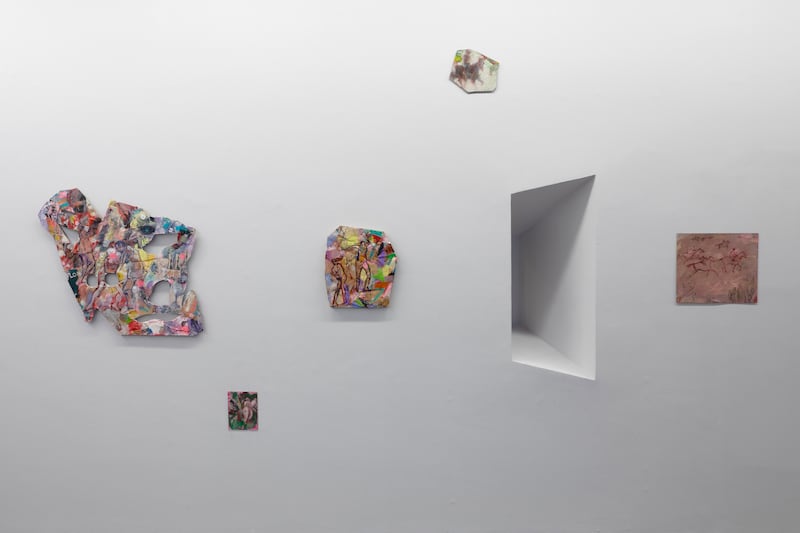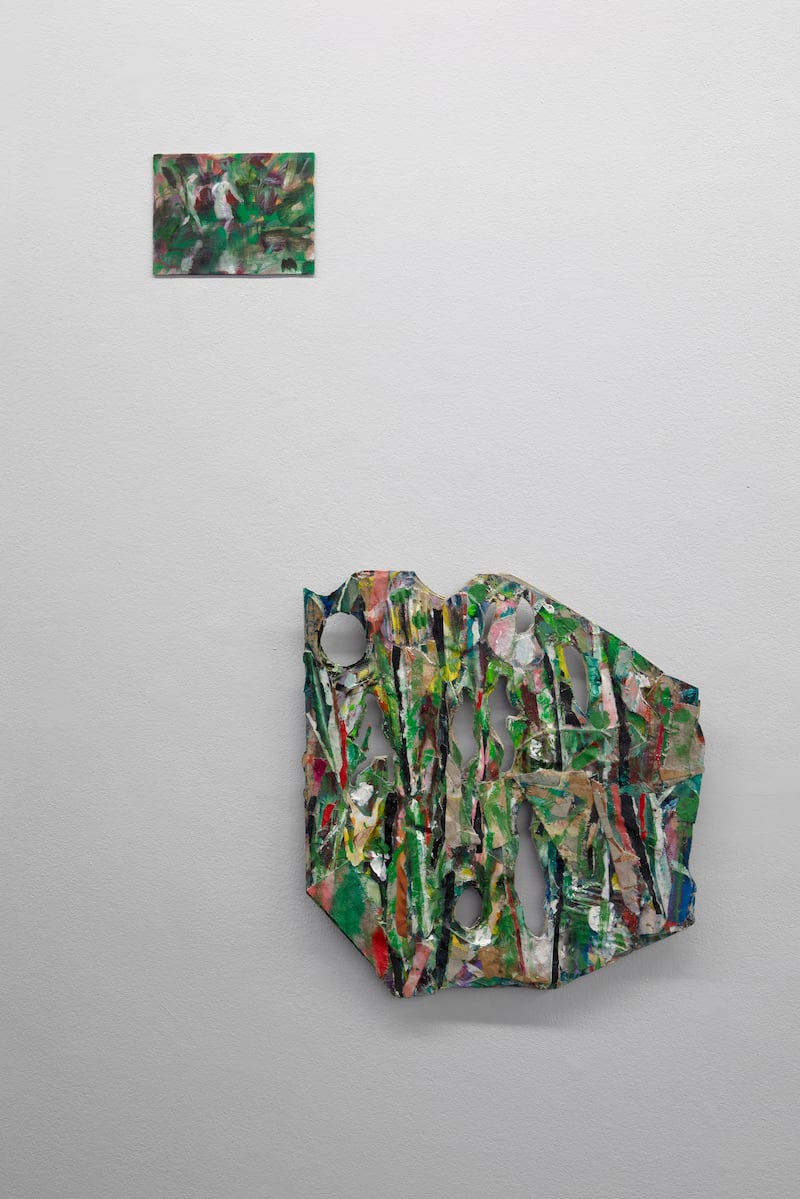Anne Ryan: Tugann an Torann
Temple Bar Gallery & Studios, Dublin
★★★★☆
Anne Ryan grew up in the late 1960s and 1970s in Limerick. After completing her first degree at the city’s school of art and design, she moved to Birmingham and then London. In an exhibition talk published online, Ryan reports that, while working in a studio in King’s Cross in the 1990s, she had an epiphany: it was in this period, she says, that the artist was finally able to “stop painting and start painting”. Putting aside something that had always dogged her steps – an inner critic, a set of insatiable expectations, an invading self-consciousness, whatever you like to call it – was the key that unlocked her career. It was the moment she began to paint without assumptions or preconceptions.
Cut to 30 years later and Ryan is the author of an impressive body of work that bears a strong and vivid personality. Her latest show at Temple Bar Gallery + Studios is emblematic of her style and singular approach to materials, featuring a prevalent collection of what the artist calls cut-outs. These are three-dimensional and two-sided collages made with acrylic and cardboard. Each one has multiple axes, meaning that within every cut-out a plethora of images is contained: as you circle the objects your attention is repeatedly led down new avenues, always induced to alight on a detail that was, only a moment ago, obscured from view. Ryan’s cut-outs are exercises in perceptual permutation.

The exhibition is dedicated to the nightlife of Temple Bar, and to that end Ryan’s cut-outs and paintings are imbued with the appropriate degree of wild, drunken glamour, each piece lending its voice to the chorus, creating the impression of a kind of Rabelaisian whirlwind where stocking-clad legs, nude contortions, dancing bodies and dreamlike riders on horseback circulate and replace one another effortlessly. Ryan has previously referenced the 16th-century Greek-Spanish painter El Greco as a major influence, and one can see traces of his style in her work, especially in the fluency with which natural curves and the proportions of people’s bodies are amplified.
On the walls hang several arresting compositions, some of which are more like manifestations than representations of the sort of seething, dissipating energy that the show creates. What caught my eye most, however, were the handful of paintings that depict the horseriders. In the context of Temple Bar, these stand out for their oblique relationship to the show’s subject, and that apparent discrepancy is partly why they work so well. The mythological figure of the cowboy, a lone, peripatetic wanderer on the outskirts of town, has always struck a chord with Ryan: she considers the cowboy an eloquent metaphor for the strange characters she remembers from her childhood in Limerick, and has addressed prior exhibitions to this theme.
READ MORE

In Tugann an Torann these effervescent sketches suggest something distant, hazy, like glimpses of a dream that fails to coalesce. As I considered them, it struck me that they had a psychogeographical quality, as though they were memories derived from the landscape itself: they seemed to want to remind us that, before the city grew and nightlife bustled, other humans, in more ancient societies, also ran and laughed and danced on this ground.
Tugann an Torann is at Temple Bar Gallery + Studios, Dublin 2, until Sunday, March 10th















